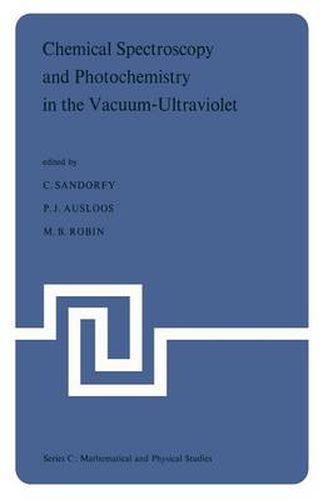Readings Newsletter
Become a Readings Member to make your shopping experience even easier.
Sign in or sign up for free!
You’re not far away from qualifying for FREE standard shipping within Australia
You’ve qualified for FREE standard shipping within Australia
The cart is loading…






This title is printed to order. This book may have been self-published. If so, we cannot guarantee the quality of the content. In the main most books will have gone through the editing process however some may not. We therefore suggest that you be aware of this before ordering this book. If in doubt check either the author or publisher’s details as we are unable to accept any returns unless they are faulty. Please contact us if you have any questions.
It is probably safe to predict that the future of chemistry is linked to the excited states of molecules and to other short lived species, ions and free radicals. Molecules have only one ground state but many excited states. However large the scope of normal, ground state chemistry might be, above and beyond it lies the world of excited states, each one having its own chemis try. The electronic transitions leading to the excited states, either discrete of continuous, are examined in molecular elec tronic spectroscopy. Electronic spectroscopy is the queen of all spectroscopies: for if we have the resolution we have everything. Vnfortunately, the chemist who is interested in the structure and reactions of larger molecules must often renounce all that infor mation. The spectra are complex and often diffuse; resolution does not always help. To understand such spectra he must look at whole families of molecules; to some extent structural analogies help. Let us call this chemical spectroscopy and handle it with care. In order to understand the properties of molecules we also need theory. We know that molecular problems are, in principle, soluble by the methods of quantum mechanics. Present time quan tum chemistry is able to provide a nearly accurate description of not too large molecules in their ground states. It is probablY again safe to predict that the future of quantum chemistry is connected with molecular excited states or, generally spoken, the accurate handling of the open-shell problem.
$9.00 standard shipping within Australia
FREE standard shipping within Australia for orders over $100.00
Express & International shipping calculated at checkout
This title is printed to order. This book may have been self-published. If so, we cannot guarantee the quality of the content. In the main most books will have gone through the editing process however some may not. We therefore suggest that you be aware of this before ordering this book. If in doubt check either the author or publisher’s details as we are unable to accept any returns unless they are faulty. Please contact us if you have any questions.
It is probably safe to predict that the future of chemistry is linked to the excited states of molecules and to other short lived species, ions and free radicals. Molecules have only one ground state but many excited states. However large the scope of normal, ground state chemistry might be, above and beyond it lies the world of excited states, each one having its own chemis try. The electronic transitions leading to the excited states, either discrete of continuous, are examined in molecular elec tronic spectroscopy. Electronic spectroscopy is the queen of all spectroscopies: for if we have the resolution we have everything. Vnfortunately, the chemist who is interested in the structure and reactions of larger molecules must often renounce all that infor mation. The spectra are complex and often diffuse; resolution does not always help. To understand such spectra he must look at whole families of molecules; to some extent structural analogies help. Let us call this chemical spectroscopy and handle it with care. In order to understand the properties of molecules we also need theory. We know that molecular problems are, in principle, soluble by the methods of quantum mechanics. Present time quan tum chemistry is able to provide a nearly accurate description of not too large molecules in their ground states. It is probablY again safe to predict that the future of quantum chemistry is connected with molecular excited states or, generally spoken, the accurate handling of the open-shell problem.